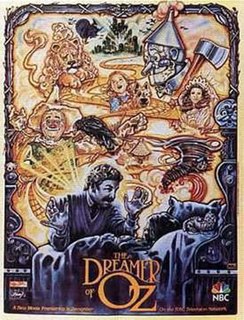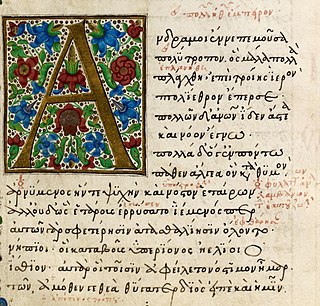
Lyman Frank Baum was an American author chiefly famous for his children's books, particularly The Wonderful Wizard of Oz and its sequels. He wrote 14 novels in the Oz series, plus 41 other novels, 83 short stories, over 200 poems, and at least 42 scripts. He made numerous attempts to bring his works to the stage and the nascent medium of film; the 1939 adaptation of the first Oz book would become a landmark of 20th-century cinema. His works anticipated such century-later commonplaces as television, augmented reality, laptop computers, wireless telephones, women in high-risk and action-heavy occupations, and the ubiquity of advertising on clothing.

Polygamy was practiced by leaders of The Church of Jesus Christ of Latter-day Saints for more than half of the 19th century, and practiced publicly from 1852 to 1890 by between 20 and 30 percent of Latter-day Saint families. Note that there are various denominations that are considered Mormons and they have different beliefs and practices.

The National Woman Suffrage Association (NWSA) was formed on May 15, 1869 in New York City The National Association was created in response to a split in the American Equal Rights Association over whether the woman's movement should support the Fifteenth Amendment to the United States Constitution. Its founders, Susan B. Anthony and Elizabeth Cady Stanton, opposed the Fifteenth Amendment unless it included the vote for women. Men were able to join the organization as members; however, women solely controlled the leadership of the group. The NWSA worked to secure women's enfranchisement through a federal constitutional amendment. Contrarily, its rival, the American Woman Suffrage Association (AWSA), believed success could be more easily achieved through state-by-state campaigns. In 1890 the NWSA and the AWSA merged to form the National American Woman Suffrage Association (NAWSA).

Matilda Joslyn Gage was a 19th-century women's suffragist, an Native American rights activist, an abolitionist, a free thinker, and a prolific author, who was "born with a hatred of oppression."

The Dreamer of Oz: The L. Frank Baum Story is a 1990 made-for-television biographical film starring John Ritter as Lyman Frank Baum, the author who wrote The Wonderful Wizard of Oz and thirteen of the other Oz books. Also starring in it was Annette O'Toole as Baum's supportive wife, Maud, and Rue McClanahan as Baum's tough mother-in-law, Matilda Gage. John's son, Jason Ritter, makes his debut in it as Harry Neal Baum. At the time of its debut, O'Toole and Ritter also starred in It, a TV miniseries where they played a couple.

The Una was one of the first feminist periodicals owned, written, and edited entirely by women. Launched in Providence, Rhode Island by Paulina Kellogg Wright Davis in February 1853, it eventually relocated to Boston. "Out of great heart of nature seek we truth" was the quote in volume 1 number 1.

"Ain't I a Woman?" is the name given to a speech, delivered extemporaneously, by Sojourner Truth, (1797–1883), born into slavery in New York State. Some time after gaining her freedom in 1827, she became a well known anti-slavery speaker. Her speech was delivered at the Women's Convention in Akron, Ohio, on May 29, 1851, and did not originally have a title.

Witchcraft Today is a non-fiction book written by Gerald Gardner. Published in 1954, Witchcraft Today recounts Gardner's thoughts on the history and the practices of the witch-cult, and his claim to have met practising Witches in 1930s England. It also deals with his theory that the Knights Templar had practised the religion, and that the belief in faeries in ancient, mediaeval and early modern Europe is due to a secretive pygmy race that lived alongside other communities. Witchcraft Today is one of the foundational texts for the religion of Wicca, along with Gardner's second book on the subject, 1959's The Meaning of Witchcraft.
The American Woman Suffrage Association (AWSA) was a single-issue national organization formed in 1869 in Boston. The AWSA lobbied state governments to enact laws granting or expanding women's right to vote in the United States. Its most prominent leader, Lucy Stone, began publishing a newspaper in 1870 called the Woman's Journal. Designed as the voice of the AWSA, it eventually became a voice of the women's movement as a whole.

The Jerry Rescue occurred on October 1, 1851, and involved the public rescue of a fugitive slave who had been arrested the same day in Syracuse, New York, during the anti-slavery Liberty Party's state convention. The escaped slave was William Henry, a 40-year-old cooper from Missouri who called himself "Jerry."
Atheist feminism is a branch of feminism that also advocates atheism. Atheist feminists hold that religion is a prominent source of female oppression and inequality, believing that the majority of the religions are sexist and oppressive towards women.

The Woman's Bible is a two-part non-fiction book, written by Elizabeth Cady Stanton and a committee of 26 women, published in 1895 and 1898 to challenge the traditional position of religious orthodoxy that woman should be subservient to man. By producing the book, Stanton wished to promote a radical liberating theology, one that stressed self-development. The book attracted a great deal of controversy and antagonism at its introduction.
Joslyn is a surname. Notable people with the surname include:

Maud Gage Baum was the wife of American children's publisher L. Frank Baum. Her mother was the suffragist Matilda Joslyn Gage. In her early life, she attended a boys' high school and was raised to be headstrong.
Betty Bone Schiess was an American Episcopal priest. She was one of the first female Episcopal priests in the United States, and a member of the Philadelphia Eleven: leaders of the movement to allow the ordination of women in the American Episcopal Church.
History of Woman Suffrage is a book that was produced by Elizabeth Cady Stanton, Susan B. Anthony, Matilda Joslyn Gage and Ida Husted Harper. Published in six volumes from 1881 to 1922, it is a history of the women's suffrage movement, primarily in the United States. Its more than 5700 pages are the major source for primary documentation about the women's suffrage movement from its beginnings through the ratification of the Nineteenth Amendment to the U.S. Constitution, which enfranchised women in the U.S. in 1920. Written from the viewpoint of the wing of the movement led by Stanton and Anthony, its coverage of rival groups and individuals is limited.
Events from the year 1911 in Sweden

The Rochester Women's Rights Convention of 1848 met on August 2, 1848 in Rochester, New York. Many of its organizers had participated in the Seneca Falls Convention, the first women's rights convention, two weeks earlier in Seneca Falls, a smaller town not far away. The Rochester convention elected a woman, Abigail Bush, as its presiding officer, making it the first public meeting composed of both men and women in the U.S. to do so. This controversial step was opposed even by some of the meeting's leading participants. The convention approved the Declaration of Sentiments that had first been introduced at the Seneca Falls Convention, including the controversial call for women's right to vote. It also discussed the rights of working women and took steps that led to the formation of a local organization to support those rights.

Mary Ann Sorden Stuart was a representative of the movement for woman suffrage from Delaware, and attended the National Conventions in Washington.
Hezekiah Joslyn was an American doctor, and politician active in 19th century abolitionism.

















